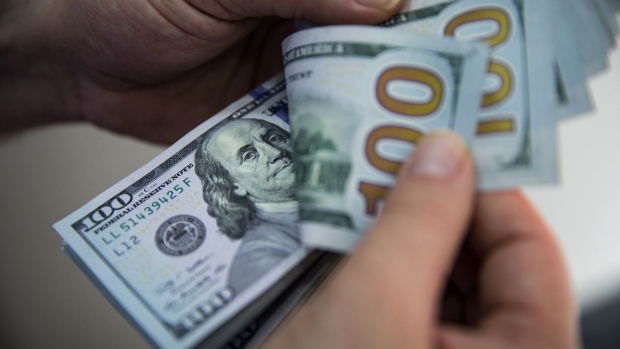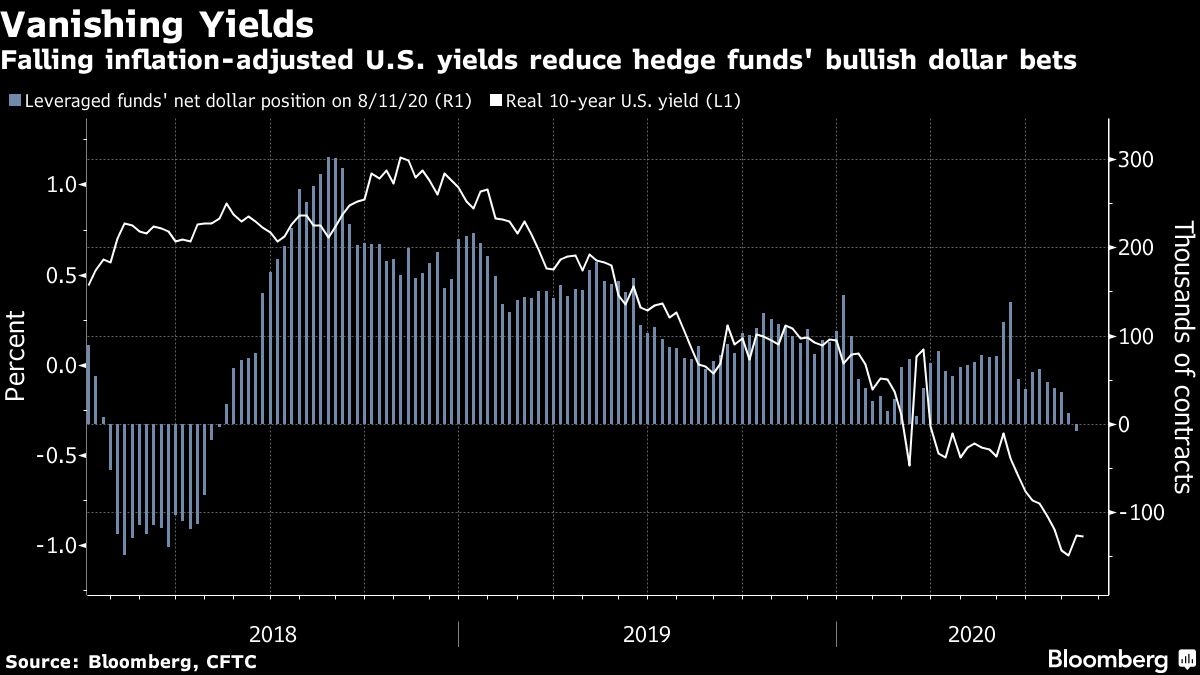Aug 17, 2020
Hedge funds are short on the U.S. dollar for first time in two years
, Bloomberg News

Hedge funds turned bearish on the dollar for the first time since May 2018, an indication that a summer slump in the world’s reserve currency will be prolonged.
Net futures and options positions held by leveraged funds against eight other currencies dropped to minus 7,881 contracts last week, according to data aggregated from the Commodity Futures Trading Commission. The swing was driven by growing bullish bets on the euro.
The dollar has come under increasing pressure since late March after the Federal Reserve pledged unlimited liquidity to support an economy hurt by the coronavirus pandemic. The central bank’s near-zero rate policy and asset purchases have also driven down inflation-adjusted 10-year yields to an all-time low, making U.S. assets less attractive.

“The drop in the dollar is a reversal from the surge in March, especially given the currency had looked overvalued,” said Yujiro Goto, head of foreign-exchange strategy at Nomura Holdings Inc. “A slide in U.S. real yields has also accelerated that move.”
A Fed index measuring dollar strength reached a record high in the second half of March as investors piled into haven assets during the worst of the virus-induced market volatility. The gauge has slid about 7 per cent since amid signs that other major economies are coping better with the pandemic outbreak.
Barclays Plc and Saxo Bank A/S say the dollar may derive some support for now as a stalemate in U.S. stimulus negotiations render investors more risk averse.
Deutsche Bank AG, on the other hand, sees the current impasse in Congress over an additional fiscal stimulus package weighing on the dollar in the near term.
“Policies are not going to be as effective or as pro-growth as one would like. It speaks to general policy malaise in the U.S. and in particular it places an additional burden on the Federal Reserve to do very easy monetary policies,” both outcomes likely to weaken the dollar, said Alan Ruskin, chief international strategist at Deutsche Bank.
It’s unclear if any rebound in the currency would have legs especially as the U.S. presidential election is approaching and the Fed is expected to maintain the policy rate at current levels at least until the end of next year.
“The longer term downtrend is clear, especially versus countries that are now doing QE and are experiencing a better recovery,” Ashvin Murthy, founder of Singapore-based hedge fund AVM Global Opportunity Fund, said of the U.S. currency. “You could have a correction in the trend but it would be an opportunity to sell into U.S. dollar strength.”
--With assistance from Joanna Ossinger, Ruth Carson and Carter Johnson.







